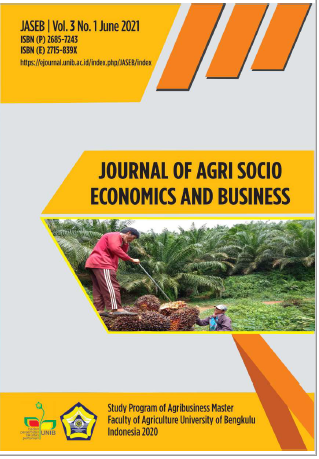Main Article Content
Abstract
Cassava is a food plant that has many advantages. For example, when there is a shortage of food reserves (grain), cassava can still be relied on as a source of substitute material because cassava is a food material that is resistant to water scarcity so that it can still be produced in critical land and easy to cultivate .The strategy of developing cassava itself is to increase the durability of cassava so that it is suitable for consumption for a long time and is not easily damaged in order to obtain a high selling value in the market by using modern technology such as a shredding machine to make it easier to smooth the cassava and jack technology in the process of pressing the caopy more quickly. With the existence of cassava processing business activities that change the shape of the primary product into a new product with a higher economic value after going through the production process, it will be able to provide added value due to the costs incurred so that a new higher price is formed and a bigger profit if compared without going through the production process. The problem faced in the strategy for the Development of Added Value of Cassava into Kaopi is that the processing of cassava still uses traditional technology so that the processing of cassava into caopy is very slow in the processing process, it takes a very long time starting from grating the cassava using hand grater, if using a grater machine. It will be faster and the pressing of the kaopi is done on by one compared to pressing using a jack which can be done by more than one kaopi and the packaging of the kaopi is undesirable so that it does not have an appeal to consumers until it is marketed outside the region.
Article Details
An author who publishes in the Journal of Agri Socio Economics and Business agrees to the following terms:
Author retains the copyright and grants the journal the right of first publication of the work simultaneously licensed under the Creative Commons Attribution-ShareAlike 4.0 License that allows others to share the work with an acknowledgement of the work's authorship and initial publication in this journal
Submission of a manuscript implies that the submitted work has not been published before (except as part of a thesis or report, or abstract); that it is not under consideration for publication elsewhere; that its publication has been approved by all co-authors. If and when the manuscript is accepted for publication, the author(s) still hold the copyright and retain publishing rights without restrictions. For the new invention, authors are suggested to manage its patent before published. The license type is CC-BY-SA 4.0.
Journal Agri Socio-Economics and Business is licensed under a Creative Commons Attribution-ShareAlike 4.0 International License.
